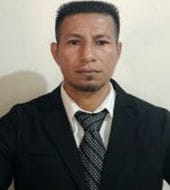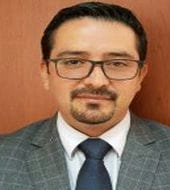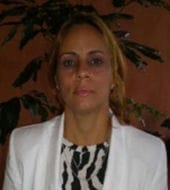Inclusive martial arts program on laterality in adolescents with autism spectrum disorder
Main Article Content
Abstract
The aim of this study was to design and validate an inclusive programme for the development of laterality in adolescents with autism spectrum disorder (ASD). The research design was based on a quantitative, pre-experimental design research approach, for which a mixed sample of 8 students (50% with and 50% without ASD) aged between 12 and 16 years was selected. The research technique used was direct observation and the instruments used were a laterality test with adaptations of the Harris test, designed to determine lateral dominance through ten tests related to martial arts, and to evaluate inclusion within the training session, an observation sheet was applied to the inclusive process of students. The research was carried out over 5 weeks with 2 classes per week in extracurricular days with the aim of developing laterality and improving the processes of inclusion. The results of the assessments in the PRE and POST intervention periods in relation to inclusion and its dimensions, showed that both in the group without ASD, with ASD and in the total study sample, there was an improvement in descriptive scores in all the dimensions studied, supported by statistically significant differences at a level of P≤0.05.
Downloads
Article Details

This work is licensed under a Creative Commons Attribution-NonCommercial-ShareAlike 4.0 International License.
1. Derechos de autor
Las obras que se publican en 593 Digital Publisher CEIT están sujetas a los siguientes términos:
1.1. 593 Digital Publisher CEIT, conserva los derechos patrimoniales (copyright) de las obras publicadas, favorece y permite la reutilización de las mismas bajo la licencia Licencia Creative Commons 4.0 de Reconocimiento-NoComercial-CompartirIgual 4.0, por lo cual se pueden copiar, usar, difundir, transmitir y exponer públicamente, siempre que:
1.1.a. Se cite la autoría y fuente original de su publicación (revista, editorial, URL).
1.1.b. No se usen para fines comerciales u onerosos.
1.1.c. Se mencione la existencia y especificaciones de esta licencia de uso.
References
Abelenda, A. J., & Rodríguez Armendariz, E. (2020). Evidencia científica de integración sensorial como abordaje de terapia ocupacional en autismo [Scientific evidence of sensory integration as an approach to occupational therapy in autism]. Medicina, 80 Suppl 2, 41–46.
Alcalá, Gustavo Celis, & Ochoa Madrigal, Marta Georgina. (2022). Trastorno del espectro autista (TEA). Revista de la Facultad de Medicina (México), 65(1), 7-20. https://doi.org/10.22201/fm.24484865e.2022.65.1.02
Beheshti, A., Zandi, H., Fathirezaie, Z. y Heidari, F. (2021). Fortaleza mental y estrategias de desempeño de artistas marciales en la práctica y competencia., 13, 13-21. https://doi.org/10.31382/EQOL.210602
Caputo, G., Ippolito, G., Mazzotta, M., Sentenza, L., Muzio, M. R., Salzano, S., & Conson, M. (2018). Effectiveness of a Multisystem Aquatic Therapy for Children with Autism Spectrum Disorders. Journal of autism and developmental disorders, 48(6), 1945–1956. https://doi.org/10.1007/s10803-017-3456-y
Caron, R., Coey, C., Dhaim, A. y Schmidt, R. (2017). Investigación de la dinámica del comportamiento social y la diferenciación de habilidades en una técnica de artes marciales. Ciencia del movimiento humano, 54, 253-266. https://doi.org/10.1016/j.humov.2017.05.005
Clément, M. A., Lee, K., Park, M., Sinn, A., & Miyake, N. (2022). The Need for Sensory-Friendly "Zones": Learning From Youth on the Autism Spectrum, Their Families, and Autistic Mentors Using a Participatory Approach. Frontiers in psychology, 13, 883331. https://doi.org/10.3389/fpsyg.2022.883331
Estrada-Marce´n, N., López-Rubio, A., & Casterad-Seral, J. (2022). La lateralidad en el Karate: estudio centrado en la praxis de los entrenadores y entrenadoras (Laterality in Karate: study focused on the praxis of coaches): estudio centrado en entrenadores y entrenadoras (study focused on coaches). Retos, 44, 806–815. https://doi.org/10.47197/retos.v44i0.91646
Fabio, R. y Towey, G. (2018). Factores cognitivos y de personalidad en la práctica habitual de artes marciales. The Journal of sports medicine and Physical Fitness, 58 6, 933-943. https://doi.org/10.23736/S0022-4707.17.07245-0
Gavilanez Bayas, J. A., Calderón Andosilla, A. A., Bonilla Sánchez, K. V., Navarro Navarro, A. M., & Paredes Peña, F. R. (2023). Efectividad de las artes marciales en el comportamiento de personas con (TEA): Revisión sistemática. MENTOR Revista De investigación Educativa Y Deportiva, 2(6), 1087–1103. https://doi.org/10.56200/mried.v2i6.6607
George, J. M., Colditz, P. B., Chatfield, M. D., Fiori, S., Pannek, K., Fripp, J., Guzzetta, A., Rose, S. E., Ware, R. S., & Boyd, R. N. (2021). Early clinical and MRI biomarkers of cognitive and motor outcomes in very preterm born infants. Pediatric research, 90(6), 1243–1250. https://doi.org/10.1038/s41390-021-01399-5
Gutiérrez Haro, A., Ávila Zúñiga, A., Romero Cota, M. D., & Palacios Solano, P. N. (2020). Intervención recreativa para la motricidad en personas autistas. Revista De Ciencias Del Ejercicio FOD, 14(2), 21–26. https://doi.org/10.29105/rcefod14.2-29
Hernández González, Osvaldo, Spencer Contreras, Rosario, & Gómez Leyva, Inalvis. (2021). La inclusión escolar del educando con TEA desde la concepción histórico-cultural de Vygotsky. Conrado, 17(78), 214-222. http://scielo.sld.cu/scielo.php?script=sci_arttext&pid=S1990-86442021000100214&lng=es&tlng=es.
Jaramillo-Arias, Piedad, Sampedro-Tobón, María Elena, & Sánchez-Acosta, Daniela. (2022). Perspectiva histórica del trastorno del espectro del autismo. Acta Neurológica Colombiana, 38(2), 91-97. https://doi.org/10.22379/24224022405
Johnstone, A. y Marí-Beffa, P. (2023). Vigilancia y flexibilidad cognitiva: el efecto de la experiencia en artes marciales en el cambio de tareas. bioRxiv . https://doi.org/10.1101/2023.05.28.542654.
Kaur, M., & Bhat, A. (2019). Creative Yoga Intervention Improves Motor and Imitation Skills of Children With Autism Spectrum Disorder. Physical therapy, 99(11), 1520–1534. https://doi.org/10.1093/ptj/pzz115
Li Lei, Zhao Fatian, Wang Haiou. (2019). New Considerations on Smart Sports and Chinese Martial Art. International Journal of Sports Science and Physical Education, 4(4), 45-50. https://doi.org/10.11648/j.ijsspe.20190404.11
Mocarzel, R. C. da S. (2016). Inclusion of people with disabilities through fights and martial arts. Revista de Artes Marciales Asiáticas, 11(2), 70–82. https://doi.org/10.18002/rama.v11i2.4177
Monteiro, C. E., Da Silva, E., Sodré, R., Costa, F., Trindade, A. S., Bunn, P., Costa E Silva, G., Di Masi, F., & Dantas, E. (2022). The Effect of Physical Activity on Motor Skills of Children with Autism Spectrum Disorder: A Meta-Analysis. International journal of environmental research and public health, 19(21), 14081. https://doi.org/10.3390/ijerph192114081
Paquet, A., Golse, B., Girard, M., Olliac, B., & Vaivre-Douret, L. (2017). Laterality and Lateralization in Autism Spectrum Disorder, Using a Standardized Neuro-Psychomotor Assessment. Developmental neuropsychology, 42(1), 39–54. https://doi.org/10.1080/87565641.2016.1274317
Pérez Correa, M. A., Lanchero Bello, M., & Flórez Vergara, P. (2021). Desarrollo social en el Trastorno del Espectro Autista (TEA) en niños entre 3 y 6 años de edad. Teknos Revista científica, 21(1), 46–54. https://doi.org/10.25044/25392190.1018
Polevaia-Secareanu, A. (2023). El uso de medios de artes marciales en el desarrollo y socialización de niños con trastorno del espectro autista. Boletín de la Universidad Transilvania de Braşov. Serie IX: Ciencias de la Cinética Humana. 16(65), 185-192. https://doi.org/10.31926/but.shk.2023.16.65.2.22
Rafiei Milajerdi, H., Sheikh, M., Najafabadi, M. G., Saghaei, B., Naghdi, N., & Dewey, D. (2021). The Effects of Physical Activity and Exergaming on Motor Skills and Executive Functions in Children with Autism Spectrum Disorder. Games for health journal, 10(1), 33–42. https://doi.org/10.1089/g4h.2019.0180
Rivera, P., Renziehausen, J., & Garcia, J. M. (2020). Effects of an 8-Week Judo Program on Behaviors in Children with Autism Spectrum Disorder: A Mixed-Methods Approach. Child psychiatry and human development, 51(5), 734–741. https://doi.org/10.1007/s10578-020-00994-7
Robles, A. ., Gallegos-Abello, C., Ulloa-Campos, N., Cabrera-Castillo, M., Zapata-Lamana, R., Tapia, A., Reyes-Molina, D., Chavez-Askins, M., Ortiz, C., & Cigarroa, I. (2023). Características y efectos de los programas escolares de actividad física para escolares con trastorno del es-pectro autista: una revisión de alcance (Characteristics and effects of school based physical activity programs for schoolchildren with autism spec-trum disorder: A scoping review). Retos, 49, 203–213. https://doi.org/10.47197/retos.v49.95002
Sansi, A., Nalbant, S., & Ozer, D. (2020). Effects of an Inclusive Physical Activity Program on the Motor Skills, Social Skills and Attitudes of Students with and without Autism Spectrum Disorder. Journal of Autism and Developmental Disorders, 51, 2254 - 2270. https://doi.org/10.1007/s10803-020-04693-z.
Sefen, J. A. N., Al-Salmi, S., Shaikh, Z., AlMulhem, J. T., Rajab, E., & Fredericks, S. (2020). Beneficial Use and Potential Effectiveness of Physical Activity in Managing Autism Spectrum Disorder. Frontiers in behavioral neuroscience, 14, 587560. https://doi.org/10.3389/fnbeh.2020.587560
Srichalerm, T., Jacelon, C.S., Sibeko, L. et al. Thai novice nurses’ lived experiences and perspectives of breastfeeding and human milk in the Neonatal Intensive Care Unit (NICU). Int Breastfeed J 19, 20 (2024). https://doi.org/10.1186/s13006-024-00620-5
Sun, Y., Tabeshian, R., Mustafa, H., & Zehr, E. P. (2024). Using Martial Arts Training as Exercise Therapy Can Benefit All Ages. Exercise and sport sciences reviews, 52(1), 23–30. https://doi.org/10.1249/JES.0000000000000326
Toscano, C. V. A., Ferreira, J. P., Quinaud, R. T., Silva, K. M. N., Carvalho, H. M., & Gaspar, J. M. (2022). Exercise improves the social and behavioral skills of children and adolescent with autism spectrum disorders. Frontiers in psychiatry, 13, 1027799. https://doi.org/10.3389/fpsyt.2022.1027799
Torres E. B. (2013). Atypical signatures of motor variability found in an individual with ASD. Neurocase, 19(2), 150–165. https://doi.org/10.1080/13554794.2011.654224
Vallejos Meriño, C., Gómez Álvarez, N., & Campos Campos, K. I. (2024). Impacto de la clase de Educación Física en escolares diagnosticados con Trastornos del Espectro Autista al interior de una Escuela Especial en Chile (Impact of the physical education class on schoolchildren diagnosed with Autism Spectrum Disorders in a Special School in Chile). Retos, 52, 499–508. https://doi.org/10.47197/retos.v52.102286
Zou, L., Xiao, Z., Wang, H., Wang, C., Hu, X., & Shu, Y. (2017). Martial arts for health benefits in children and youth with autism spectrum disorder: a systematic review. Archives of Budo, 13.





